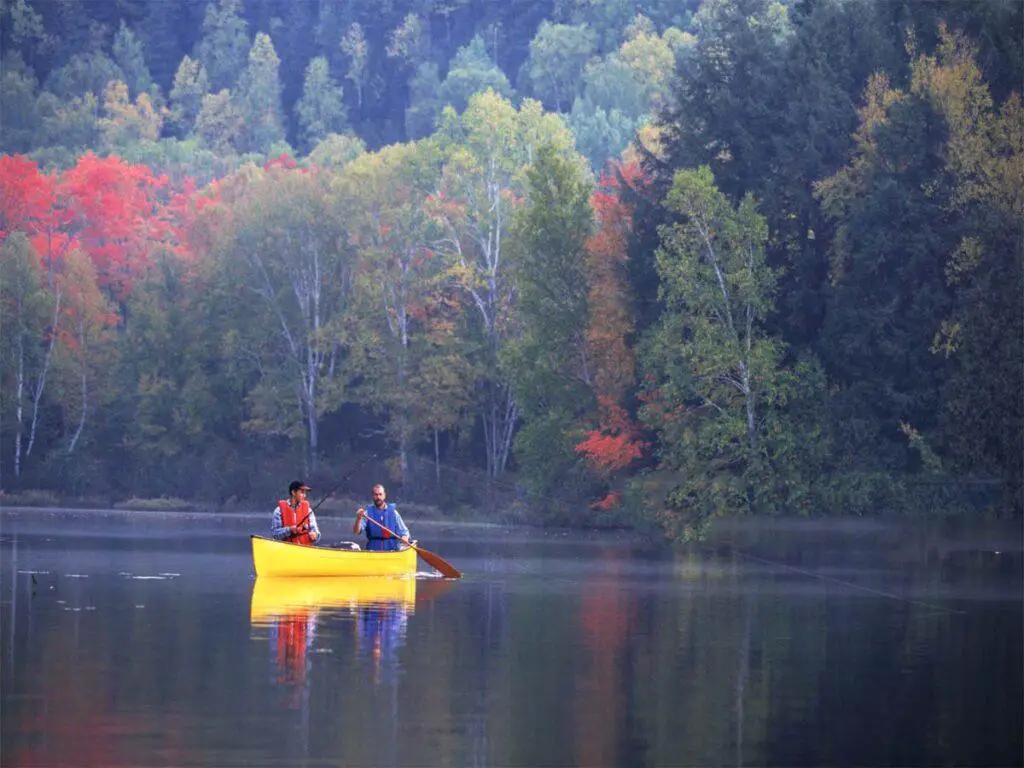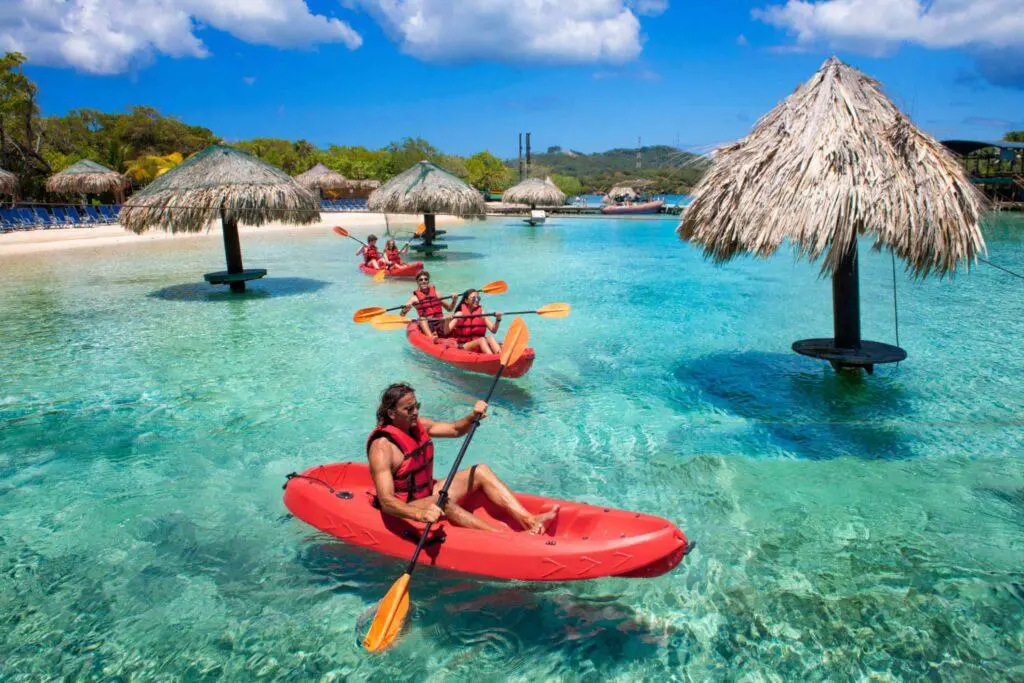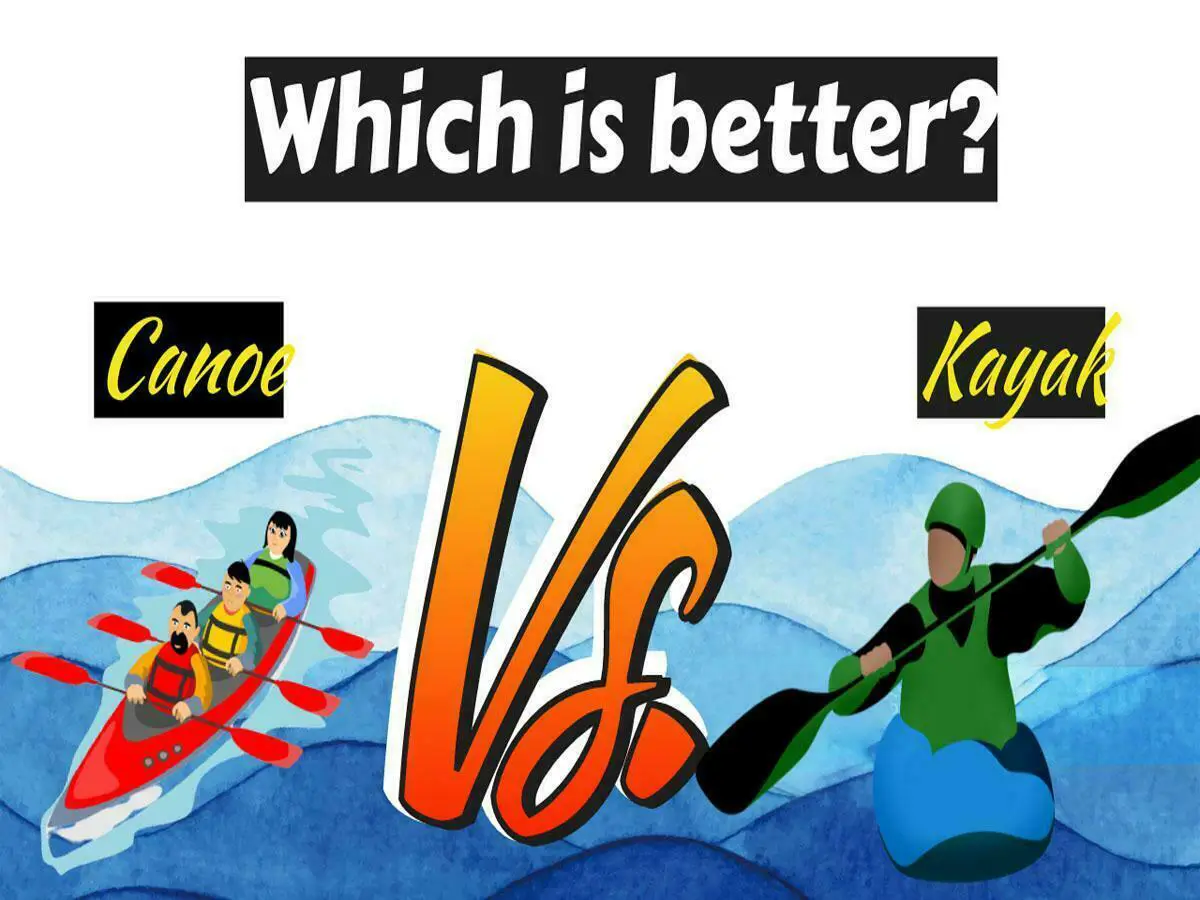Canoeing and kayaking are the most fascinating sports or hobbies in the world. In this post, we are trying to cover 7 Interesting Facts About Canoeing Vs Kayaking. Hope you will gain a piece of proper knowledge. This article is arranged with answers to all the questions that come to your mind. From underneath, you can understand which one is better for you.
If you are a nature lover or you hope to explore the serenity or the various forms of nature, then the softness of the sea will take you to the gamble of that joy. You can play with the current in the ocean, with kayaks or canoes, without any noise. It’s not just a game but an exercise. This game. Through it, you will be able to meet new people who are water lovers just like you.
In the world of water sports, Canoeing Vs Kayaking is a very old debate. People have their own choices on these two fun water sports. Beginners might confuse the two for the same thing sometimes but there are quite a few distinctive features between these two water sports.
There are different uses and functions of the two that make kayaking vs canoeing perform differently in different situations. They also differ in terms of choice and structure.
Diving deep into the question of which one to choose for your needs, here are the differences between the two.
Basic Structure [Canoeing]
Canoes are designed with open cockpits. They have long sides and wide hulls. The appearance is much similar to that of a rowboat. Canoes mostly have benches on each side where the canoeist sits. To stir it a single-sided paddle is used.
There are three main categories of canoes. These are,
- Recreational canoes
- Racing canoes
- Whitewater canoes
Canoes range from 13 to 17 feet long. The general width for a 16 feet long canoe would be roughly 37 inches or 94 cm in width.

Basic Structure [Kayaking]
Kayaks are primarily made with closed-top designs with a slicker and smaller hull. Kayaks have a hole in their bodies on the top side. This hole is used by the kayaker to get into the kayak. Kayaks have two categories depending on the position of the seat. These seats can be raised with extra gear according to the kayaker’s needs.
- Seat on top kayak [SOT]
- Set inside kayak [SIK]
In SOT kayaks the kayaker does not have to slide their feet inside the closed compartment of the hull of the kayak. Rather they just get on the kayak and sit on it just as the name suggests. SDKs on the other hand are traditional where the kayaker sits inside the kayak.
Based on other functionalities there are three more categories of kayaks. These are,
- White water kayaks
- Touring or sea kayaks
- Canoe kayak hybrids
Kayaks can be from 6 to 16 feet long but on average most are 10 feet long. The widths of kayaks range from 25-28 inches on average. The difference in length plays a big role when gaining speed. It is due to the length-to-width ratio of the kayak.
Kayaks have rockers which means that the hull on the front of the kayak is lifted upwards from the water. That reduces the area of the hull in contact with the water.

Difference Between Kayaking and Canoeing
1. Stability
When we compare the stability while kayaking vs canoeing we have to consider where it is floating.
Canoes have wider hulls which means more area is in contact with the water’s surface. This makes them very stable in still waters. While kayaks have smaller hull areas thus they are comparably less stable.
In extreme waves, canoes suffer much. While kayaks can move better in those conditions comparably.
In the case of wind, canoes are more affected by it because they have a large body that stays higher up from the water. Meanwhile, a kayak floats closer to the water surface thus they are less affected by wind change.
2. Speed And Control
A beginner kayaker reaches speeds of 2-2.25 knots/hour but an experienced kayaker can reach up to 3 knots per/hour in still water. Canoes on the other hand reach speed of 1.8-2.6 knots per hour depending on the level of experience of the canoeist
The key is the slim design of the kayak. The smaller the hull is, the less resistance it has to overcome. As canoes have a larger hull area it means that it has to go through more resistance. Thus the stability of the canoe is bought at the price of its speed.
While solo paddling, it is easier for a kayaker than a canoeist to gain speed.
Kayaks also provide greater maneuverability with less effort. Canoes can also be maneuvered quite well but it requires more effort.
3. Portability
You can transport a kayak or a canoe using a cart. For longer distances, you can tie the canoe or the kayak on the roof of your car. It is possible to carry multiple kayaks in a single car but most cars are wide enough for only one canoe.
Both kayaks and canoes can be carried by two or even a single person. But on multi-day trips, carrying a canoe would be easier than a kayak. This is especially true for multi-day tours.
4. Sense Of Comfort
Canoeing vs Kayaking provides different types of comfort. It can be measured on a few factors.
Due to the open wide cockpits of canoes, one can easily move while sitting in them. In a wide canoe, one can stretch their legs, shift positions and other minimal movements are possible.
On a kayak, the kayaker cannot move so easily especially if it is a sit-inside kayak. In a sit-inside kayak, the legs are stretched at the front and have to stay that way for the whole duration the kayak is on the water. In sit-on-top kayaks, there is more room for movement as the legs are not trapped in a close cockpit but the sitting positions are more or less the same.
Canoes use one side’s paddles. Also, the wide hull creates more resistance thus paddling takes more effort. People often paddle canoes in pairs. One sitting in front of the canoe and the other sitting at the back. Then the two paddle at opposite sides. If one person is paddling then it becomes much harder.
Kayaks use two-sided paddles. The boat’s slick design also helps. Paddling in a kayak takes less effort and a solo paddler can paddle for a longer period of time.
Canoes are much easier to enter and exit compared to kayaks. One can simply walk in and out of a canoe. But a kayak takes longer. Also, a fair amount of skill is required to get in and out of a kayak.
5. Storage Capacity
Canoes have an open top with a lot of space. All items can be placed directly onto the canoe. Canoes due to their large hull size can fit a lot of items at once. Items are easy to reach and they can be stacked up however you want.
Kayaks mostly have three chambers that are used for storage. One at the head of the kayak, one in the middle in front of the seat, and one at the end of the kayak.
These storage wells are quite small so you cannot store large items. You also have to divide the items into parts because none of the compartments are big enough to hold all of your stuff.
6. Safety
Canoeing Vs Kayaking is both made with the factor of safety in mind. They are pretty secure but even so, there are cases where emergencies appear.
It is rare for a canoe to flip in still water. Rater even to flip a canoe willingly would take significant effort. So on still water, if the canoeist is careful, a canoe seldom topples over.
Kayaks have a much slimmer hull so it is possible to topple them on the sides. But with a little practice, this also becomes a problem of the past.
Assuming cases where they both do flip over due to any unforeseen circumstances there would be two different scenarios.
If you are in a canoe that has flipped over then water will be rushing in it fast and you cannot hope to flip it back staying in deep water. This can pose a threat, but the canoe even topples should float so you can hold on to it.
Kayaks on the other hand can be flipped right back up. This can even be done without leaving the kayak. This safety skill is also known as the Eskimo roll.
To perform it you have to have your paddle parallel to your kayak at the moment of flipping. Then while underwater, simply raise your paddle as much as you can to the surface and then use your hips to thrust your body upwards. If done correctly, you can get back on the surface within 5 seconds.
7. Learning Curve
Even though they are both paddle vehicles, the process and time of learning canoeing vs kayaking can differ much.
It is easier to learn the basics of kayaking but as time progresses things get harder. Mastering kayaking can take a long time. But it is a very good choice for beginners.
A beginner kayaker has to just learn to balance himself, learn to get in and out, a few strokes and he is ready to begin his journey.
As canoes use a one-sided paddle thus there needs to be a second person to help a beginner by paddling on the other side.
Even then if they are not in sync the canoe can keep going in circles. Learning to paddle a canoe all by oneself takes sufficient practice.
Let’s Take a Look at Canoeing Vs Kayaking: Pros and Cons
Pros
- Kayak is extremely easy and strategically fast.
- A kayak is a double-bladed paddle, so it is very effortless to drive
- In the waves, you can easily and calmly manage a kayak in the open water.
- Anyone can drive it.
- Kayaks are more flexible, with a variety of models that are easy to use.
Cons
- Getting wet means you are sitting very close to the water
- You will have to paddle harder to raise your speed because of inflexibility.
- Less opportunity of development with a shut cockpit
- You can easily acquire basic knowledge but you have to learn new techniques to gain more knowledge.
Pros
- On rough water, it is stable.
- Durable.
- Most canoes have flexible seats.
- Great for significant distance travel.
Cons
- It is costly.
- A heavier boat implies it’s harder to move.
- Spray, wind, and sun are for paddlers because canoes have open cockpits.
- Canoes are less flexible than kayaks and thus require more work to turn.
Canoeing Vs Kayaking: Which One Is For You?
Finally, Canoeing Vs Kayaking comes down to what you want from your experience. There are personal preferences in each category.
If you care for a slow water journey with a stable platform then canoeing is for you. If you want to feel the breeze on your face with a bit of speed then you should choose kayaking. If you are on a family trip then canoeing is best. If you don’t have to store much then you can choose kayaking.
In the end, canoeing vs kayaking, the debate can go on but with this guide, you can decide to choose which one you want. Perhaps, even try both?
Last but not the list…If you have a canoe lover or kayak lover people you can visit the best canoes and kayaks with helpful tips.

